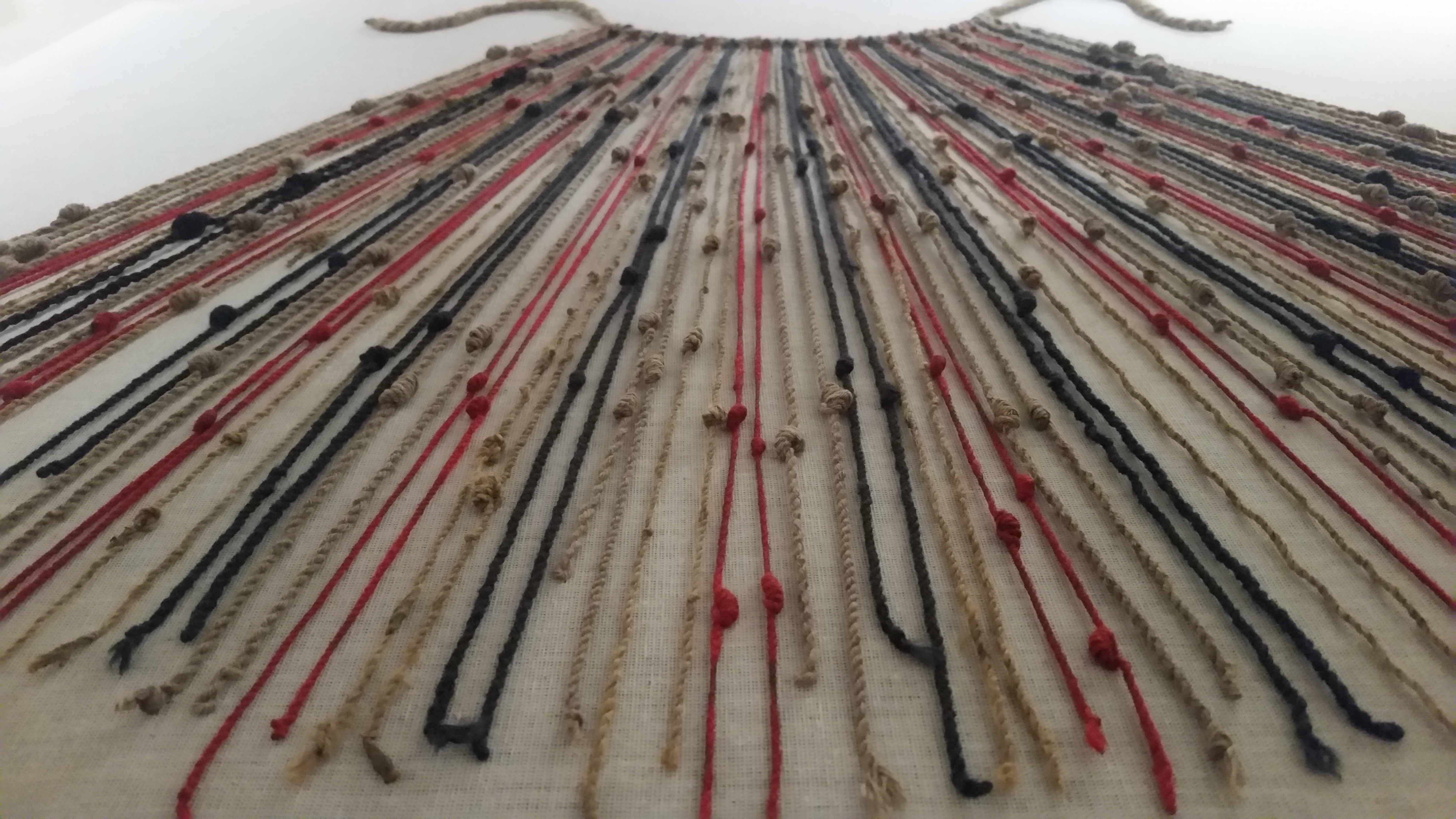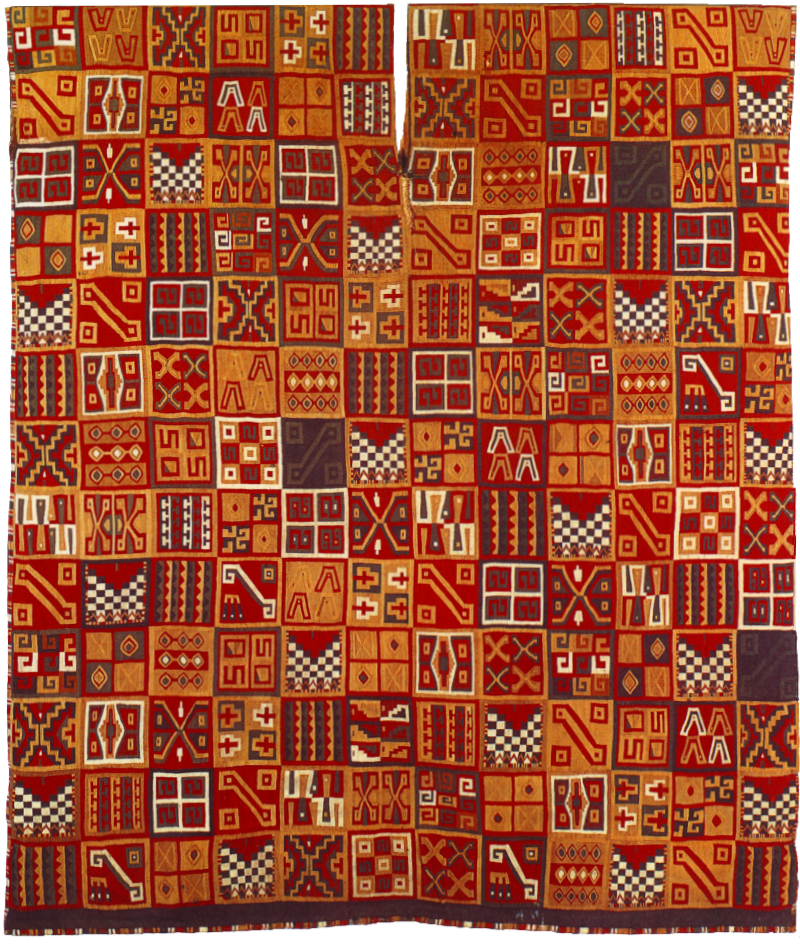|
Amauta
Amauta (meaning "master" or "wise one" in Quechua) was a title for teachers in the Inca empire, especially of children of the nobility. According to Fray Martin de Murua, a missionary in Peru, education in the Inca empire was instituted in schools called ''Yachaywasi'' or "Houses of Knowledge" in Cuzco. Students were children of the Inca nobility, the future rulers. The subjects were the moral standards, religion, government tenets, statistics, math, science, " Runa-Simi" language variety of Cuzco, Khipu interpretation, art, music construction, history, agronomy, architecture, medicine, philosophy and cosmological ideas of the earth and the universe, among other subjects. The original ''Yachaywasi'' was constructed and inaugurated by Inca Roca Inca Roca (Quechua ''Inka Roq'a'', " magnanimous Inca") was the sixth Sapa Inca of the Kingdom of Cusco (beginning around CE 1350) and the first of the Hanan ("upper") Qusqu dynasty.Steele, Paul Richard and Allen, Catherine J. (2004) ''Han ... [...More Info...] [...Related Items...] OR: [Wikipedia] [Google] [Baidu] |
Amaruk Kayshapanta
Juan Carlos Caizapanta (Amaruk Caizapanta Anchapacxi) (Quito, January 30, 1970), whose stage name is ''Amaruk'' is an Ecuadorian multidisciplinary artist, known in Spain and Ecuador for his artistic and humanistic trajectory towards Human Rights of Immigrants in Spain. Named as the "Chasqui de Oro" (In the VI Race and hike El Chasqui-NY). Received the award as "Cultural Ambassador of the Andes-Mushuk Nina 2014 (Third Edition)". His Philosophy "Amawtica Amarukiana Desestructuration" brings to the contemporary world the Philosophical study of the Andean Worldview, a spiritual legacy of transformation and balance for the awakening of a collective conscience. Working with the Catalan Director Ventura Pons, in the film produced by Films de la Rambla, was the key that helped him open all doors and as a Latin American actor to enter the market Audiovisual Spanish. He has filmed as a minor actor and linguistic translator for Apache Films, in a film directed by Agustín Díaz Yanes (winner ... [...More Info...] [...Related Items...] OR: [Wikipedia] [Google] [Baidu] |
Inca Empire
The Inca Empire (also known as the Incan Empire and the Inka Empire), called ''Tawantinsuyu'' by its subjects, ( Quechua for the "Realm of the Four Parts", "four parts together" ) was the largest empire in pre-Columbian America. The administrative, political and military center of the empire was in the city of Cusco. The Inca civilization arose from the Peruvian highlands sometime in the early 13th century. The Spanish began the conquest of the Inca Empire in 1532 and by 1572, the last Inca state was fully conquered. From 1438 to 1533, the Incas incorporated a large portion of western South America, centered on the Andean Mountains, using conquest and peaceful assimilation, among other methods. At its largest, the empire joined modern-day Peru, what are now western Ecuador, western and south central Bolivia, northwest Argentina, the southwesternmost tip of Colombia and a large portion of modern-day Chile, and into a state comparable to the historical empires o ... [...More Info...] [...Related Items...] OR: [Wikipedia] [Google] [Baidu] |
Quechua Languages
Quechua (, ; ), usually called ("people's language") in Quechuan languages, is an indigenous language family spoken by the Quechua peoples, primarily living in the Peruvian Andes. Derived from a common ancestral language, it is the most widely spoken pre-Columbian language family of the Americas, with an estimated 8–10 million speakers as of 2004.Adelaar 2004, pp. 167–168, 255. Approximately 25% (7.7 million) of Peruvians speak a Quechuan language. It is perhaps most widely known for being the main language family of the Inca Empire. The Spanish encouraged its use until the Peruvian struggle for independence of the 1780s. As a result, Quechua variants are still widely spoken today, being the co-official language of many regions and the second most spoken language family in Peru. History Quechua had already expanded across wide ranges of the central Andes long before the expansion of the Inca Empire. The Inca were one among many peoples in present-day Peru who already spo ... [...More Info...] [...Related Items...] OR: [Wikipedia] [Google] [Baidu] |
Cuzco
Cusco, often spelled Cuzco (; qu, Qusqu ()), is a city in Southeastern Peru near the Urubamba Valley of the Andes mountain range. It is the capital of the Cusco Region and of the Cusco Province. The city is the seventh most populous in Peru; in 2017, it had a population of 428,450. Its elevation is around . The city was the capital of the Inca Empire from the 13th century until the 16th-century Spanish conquest. In 1983, Cusco was declared a World Heritage Site by UNESCO with the title "City of Cuzco". It has become a major tourist destination, hosting nearly 2 million visitors a year. The Constitution of Peru (1993) designates it as the Historical Capital of Peru. Spelling and etymology The indigenous name of this city is . Although the name was used in Southern Quechua, its origin is found in the Aymara language. The word is derived from the phrase ('rock of the owl'), related to the city's foundation myth of the Ayar siblings. According to this legend, Ayar Awqa ( ... [...More Info...] [...Related Items...] OR: [Wikipedia] [Google] [Baidu] |
Quechuan Languages
Quechua (, ; ), usually called ("people's language") in Quechuan languages, is an indigenous language family spoken by the Quechua peoples, primarily living in the Peruvian Andes. Derived from a common ancestral language, it is the most widely spoken pre-Columbian language family of the Americas, with an estimated 8–10 million speakers as of 2004.Adelaar 2004, pp. 167–168, 255. Approximately 25% (7.7 million) of Peruvians speak a Quechuan language. It is perhaps most widely known for being the main language family of the Inca Empire. The Spanish encouraged its use until the Peruvian struggle for independence of the 1780s. As a result, Quechua variants are still widely spoken today, being the co-official language of many regions and the second most spoken language family in Peru. History Quechua had already expanded across wide ranges of the central Andes long before the expansion of the Inca Empire. The Inca were one among many peoples in present-day Peru who already spo ... [...More Info...] [...Related Items...] OR: [Wikipedia] [Google] [Baidu] |
Khipu
''Quipu'' (also spelled ''khipu'') are recording devices fashioned from strings historically used by a number of cultures in the region of Andean South America. A ''quipu'' usually consisted of cotton or camelid fiber strings. The Inca people used them for collecting data and keeping records, monitoring tax obligations, collecting census records, calendrical information, and for military organization. The cords stored numeric and other values encoded as knots, often in a base ten positional system. A ''quipu'' could have only a few or thousands of cords. The configuration of the ''quipus'' has been "compared to string mops." Archaeological evidence has also shown the use of finely carved wood as a supplemental, and perhaps sturdier, base to which the color-coded cords would be attached. A relatively small number have survived. Objects that can be identified unambiguously as ''quipus'' first appear in the archaeological record in the first millennium AD (though debated quipus ... [...More Info...] [...Related Items...] OR: [Wikipedia] [Google] [Baidu] |
Inca Roca
Inca Roca (Quechua ''Inka Roq'a'', " magnanimous Inca") was the sixth Sapa Inca of the Kingdom of Cusco (beginning around CE 1350) and the first of the Hanan ("upper") Qusqu dynasty.Steele, Paul Richard and Allen, Catherine J. (2004) ''Handbook of Inca Mythology'' ABC-CLIO, Santa Barbara, Californiapage 193 His wife was Mama Michay, and his son was Yawar Waqaq. He had four other famous sons, Inca Paucar, Huaman Taysi Inca, and Vicaquirau Inca. Vicaquirau Inca and Roca's nephew Apu Mayta were great warriors, who helped subjugate Muyna, Pinahua and Caytomarca. He died in 1388 at the age of 57 years. Biography Roca's father was the Emperor Cápac Yupanqui, whose heir apparent (by his wife Cusi Hilpay) had been his son Quispe Yupanqui. However, after Cápac Yupanquiʻs death, the ''hanan'' moiety rebelled against the ''hurin'', killed Quispe Yupanqui, and gave the throne to Inca Roca, son of another of Cápac Yupanquiʻs wives, Cusi Chimbo. Inca Roca moved his palace into the ... [...More Info...] [...Related Items...] OR: [Wikipedia] [Google] [Baidu] |
Organization Of American States
The Organization of American States (OAS; es, Organización de los Estados Americanos, pt, Organização dos Estados Americanos, french: Organisation des États américains; ''OEA'') is an international organization that was founded on 30 April 1948 for the purposes of solidarity and co-operation among its member states within the Americas. Headquartered in the United States capital, Washington, D.C., the OAS has 35 members, which are independent states in the Americas. Since the 1990s, the organization has focused on election monitoring. The head of the OAS is the Secretary General; the incumbent is Uruguayan Luis Almagro. History Background The notion of an international union in the New World was first put forward during the liberation of the Americas by José de San Martín and Simón Bolívar who, at the 1826 Congress of Panama (still being part of Colombia), proposed creating a league of American republics, with a common military, a mutual defense pact, and a ... [...More Info...] [...Related Items...] OR: [Wikipedia] [Google] [Baidu] |
Inca Society
The Inca society was the society of the Inca civilization in Peru. The Inca Empire, which lasted from 1438 to 1533 A.D., represented the height of this civilization. The Inca state was known as the Kingdom of Cusco before 1438. Over the course of the empire, the rulers used conquest and peaceful assimilation to incorporate a large portion of western South America, centered on the Andes mountain ranges. The empire proved relatively short-lived however: by 1533, Atahualpa, the last Sapa Inca (emperor) of the Inca Empire, was killed on the orders of the conquistador Francisco Pizarro, marking the beginning of Spanish rule. The last Inca stronghold, the Neo-Inca State in Vilcabamba, was conquered by the Spanish in 1572. Population Population estimates for the Tawantinsuyu society range from as few as 4.1 million people to more than 36 million. Most estimates are between 6 and 14 million people. The reason for these various estimates is that, while the Inca kept excellent censu ... [...More Info...] [...Related Items...] OR: [Wikipedia] [Google] [Baidu] |


.png)

.jpg)
